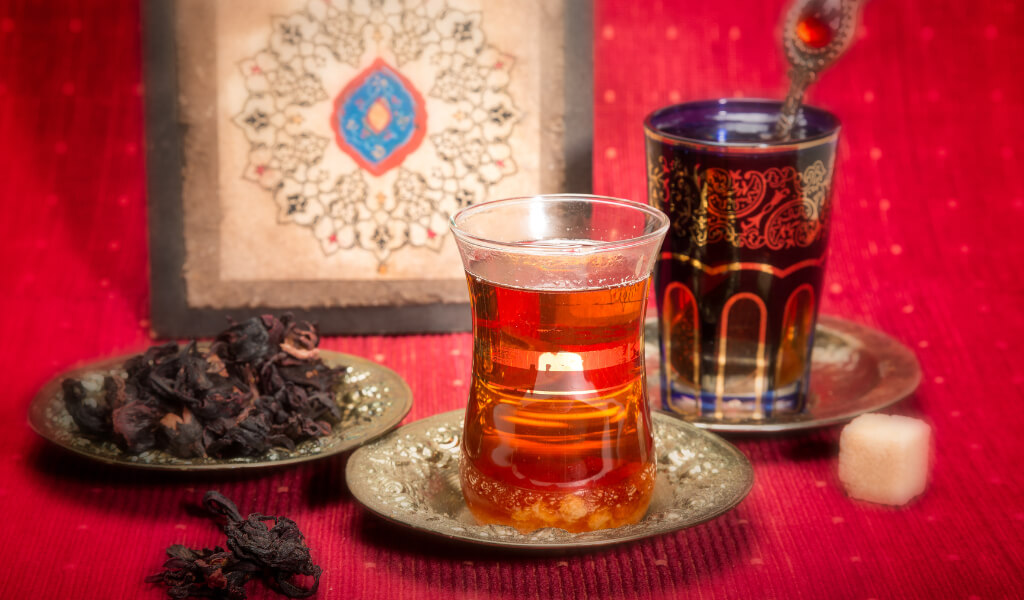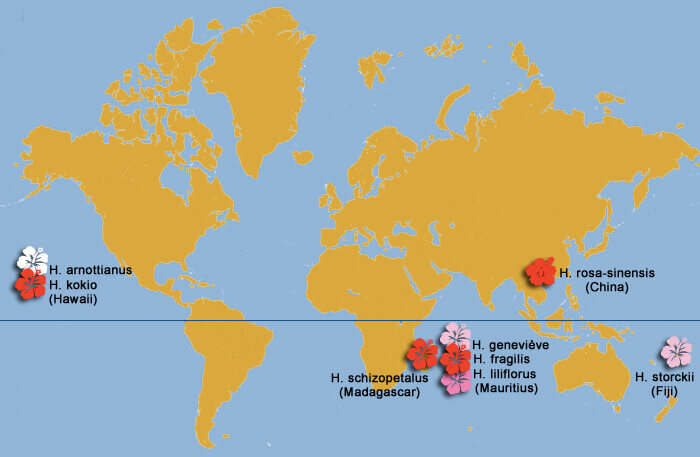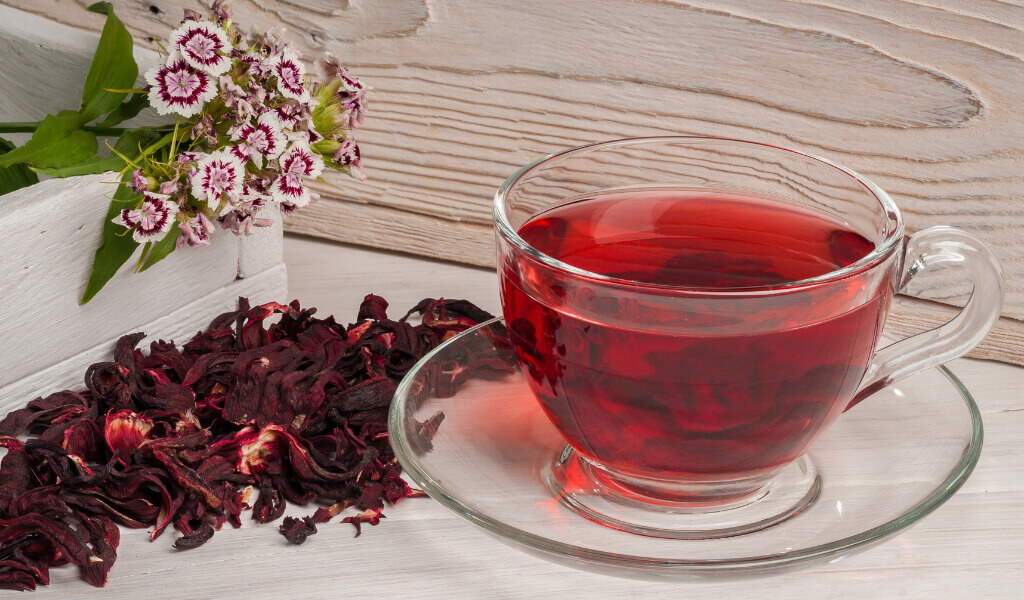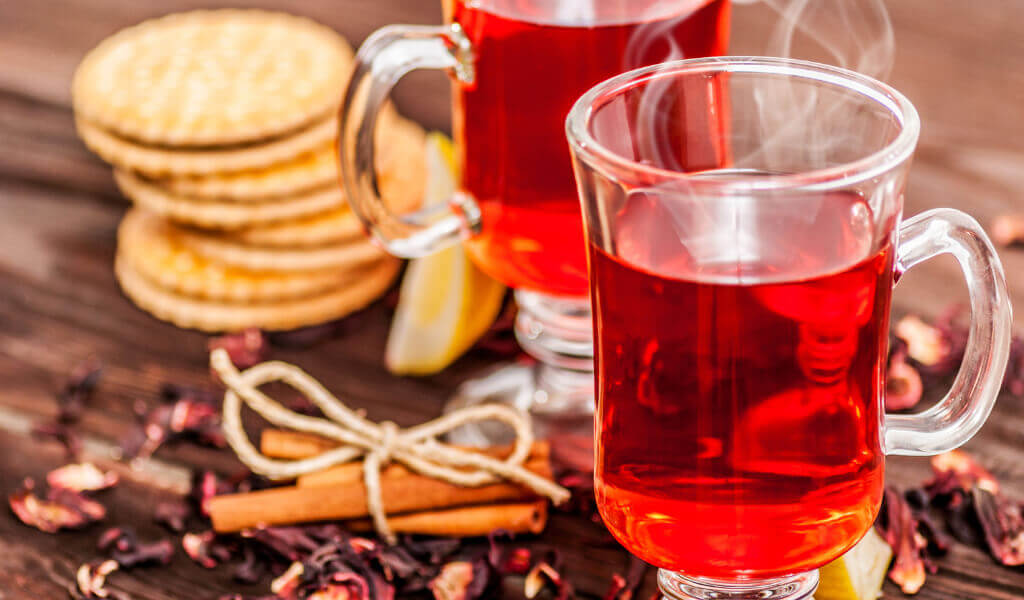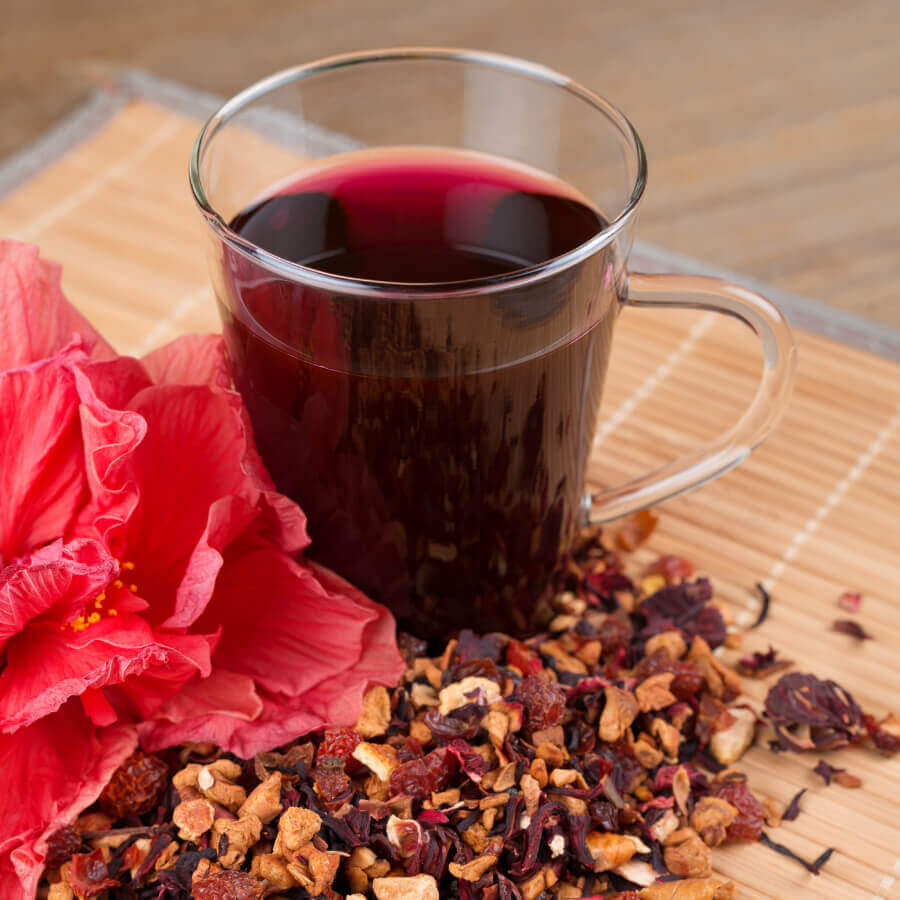Welcome to the ultimate guide on “what is Hibiscus Tea?” Are you a tea lover searching for a new and exciting flavor to add to your collection? Or are you a health enthusiast curious about the health benefits of hibiscus tea? Whatever your reason for stumbling upon this article, we’ve got you covered!
Quotes of tea with You
“A cup of tea is an excuse to share great thoughts with great minds.” – Christina Re
What is hibiscus tea?
Hibiscus tea is a refreshing drink from the flowering part of the roselle plant (Hibiscus sabdariffa), native to Africa, Asia, and India. While it’s technically an herbal infusion and not a proper tea, it’s commonly called growing hibiscus for tea. You might also hear it called Jamaica flower in Mexico, Red Sorrel, or Sour tea.
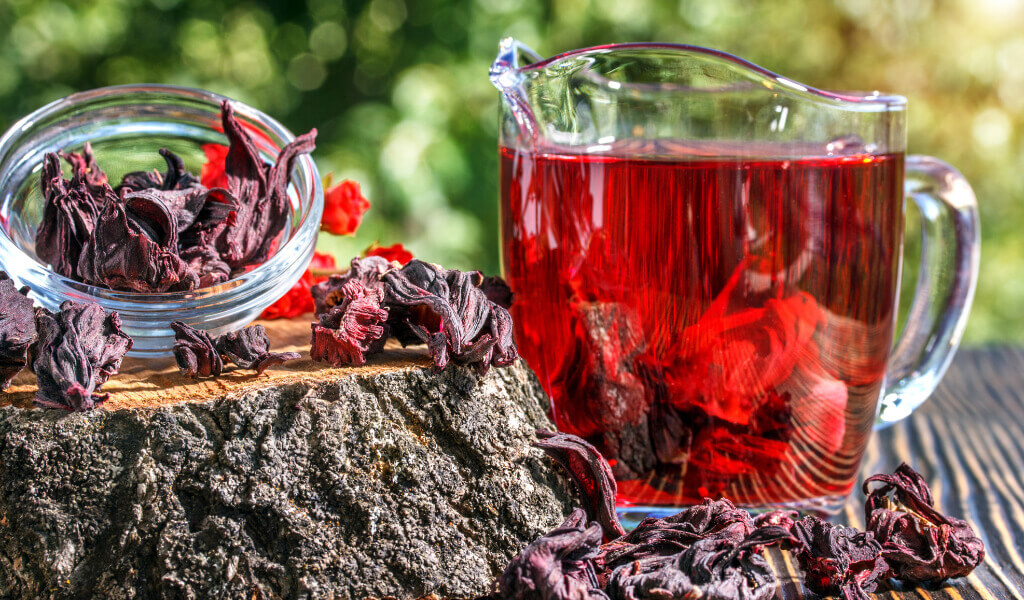
Many scientists have proven the close relationship between hibiscus tea and blood pressure, cholesterol, and other factors.
To make Hibiscus Tea, you don’t use the petals of the roselle flower. Instead, use the calyces, the flower part just below the petals. The petals themselves are usually white, pale yellow, or light pink. On the other hand, the calyces are a deep red color, giving hibiscus tea its distinctive hue.
Hibiscus sabdariffa is the hibiscus used primarily to make Hibiscus tea recipe
Once you plant fruits, you can separate the fresh fruits from the calyces or leave the whole pods to dry and separate the fruits from the calyces later.
The tea is an infusion of dried roselle calyces, which you can make in two ways. You can either use boiling water, which is quicker, or steep the dried calyces in cold water, which takes longer but produces a smoother, fruitier flavor.
As I travel the world, I’ve encountered the Hibiscus flower in many forms. Its stunning beauty always catches my eye.
I love to indulge in its tangy, tea-like flavor when steeped into a hot or cold herbal infusion. Depending on the country, this popular beverage goes by various names.
- Australia: Rosella
- Caribbean: Sorrel
- Egypt and Sudan: Karkadé
- Ghana: Soobolo
- India: Gudhal or arhul ka phool
- Iran: Chai Torsh
- Iraq: Chai Kujarat
- Italy: Carcadè
- Latin America: Agua de Jamaica or rosa de Jamaica
- Philippenes: Gumamela
- West Africa: Bissap, tsoborodo, or wonjo
- West Indies and Thailand: Roselle
Where does hibiscus come from?
Did you know that hundreds of different species of Hibiscus grow all over the world?
Did you know that Hibiscus, a plant that is native to tropical areas, can flourish both inside and outside in every type of climate across the United States? No matter where you are – on the shore, in the desert, or in the mountains – you may enjoy these lovely blossoms!
China and Thailand are the world’s top commercial producers and exporters of hibiscus, followed by Mexico, Egypt, Senegal, Tanzania, Mali, Jamaica, India, and Malaysia. Although Sudan is known for producing the highest-quality Hibiscus, their production output could be higher, meaning that only some people enjoy this coveted export.
The gorgeous trumpet-shaped blooms of the hibiscus plant are among its most noticeable characteristics. The size and color of these blooms varies depending on the plant.
While some are little, others might reach the size of a dinner plate! They come in a variety of gorgeous colors, including deep purple, buttery yellow, and scarlet red. Some even have flowers with changing color blooms!
Hibiscus is often harvested, dried, and brewed into an herbal tea using the crimson red flowers of a particular hibiscus species known as roselle or Hibiscus sabdariffa.
Read More:
- What is Neem Tea: Origin, Use, Flavor and How to make
- What is Lemongrass Tea? 🌱Origin, Nutrition and how to drink
- What is Chai tea? Interesting things you haven’t heard
- Buying & Storing Tulsi Herbal Tea
- What is ginger tea? Things You didn’t know about it
- What is Chamomile Tea? Everything You need to know
What is hibiscus tea made of?
The dried sepals or calyces of the hibiscus flower are used to make Hibiscus tea. The most popular kind of hibiscus used to make tea is Hibiscus sabdariffa, sometimes called roselle.
Sometimes, hibiscus tea is blended with other herbs or fruit flavors to create different varieties and flavors. Indulge in a zesty red tea that packs a punch! It’s not just a feast for your taste buds – this brew might also help with digestion and blood pressure.
Hibiscus tea contains mainly vitamin C, citric acid, malic acid, potassium, anthocyanins, polyphenols, and amino acids.
The sour taste, which is its characteristic, is because it contains plenty of Citric Acid and malic acid.
What type of hibiscus is used for tea?
The various forms in which hibiscus can be found include:
- Single tea bags
- Ready-to-drink tea
- Loose flower petals
- Liquid extract
- And encapsulated powder.
Which hibiscus is used for tea?
Through my travels, I discovered that hibiscus is a beloved worldwide beverage. When steeped in hot water, the crimson flowers create a ruby red liquor with a tangy, lemon-like flavor with hints of cranberry or pomegranate.
Did you know that some types of hibiscus have a touch of bitterness to them? Many folks prefer adding a little sugar or sweetener to their hibiscus tea for a tastier sip!
For an even more flavorful experience, hibiscus tea can be blended with fruit or citrus juices, fresh ginger or mint, and various dried spices like cinnamon and cloves.
Although there are Hibiscus tea side effects, some people even add a splash of alcohol, like vodka, rum, or beer, to enhance or complement the unique taste of hibiscus tea.
The possibilities are endless when it comes to this versatile and delicious beverage!
Hibiscus is more than just a pretty flower and a delicious tea. In many cultures, it has practical and symbolic uses that go beyond what meets the eye:
- In Hawaii, hibiscus is the state flower. Women often wear it behind the ear to indicate their relationship status. If the flower is worn behind the right ear, she’s looking for a mate. If it’s behind the left ear, she’s already taken.
- The red hibiscus is also an essential flower in Hindu culture and is often offered to the goddess Kali during worship.
- In the Philippines, children have fun playing with hibiscus flowers by turning them into bubble-making juice and blowing bubbles through hollowed-out papaya stalks.
- In some cultures, the strong fibers found in the hibiscus stem can be turned into a natural fabric like burlap.
- The green leaves of the hibiscus plant can also be used as an herb or spinach in certain culinary dishes. In Senegal, they’re used to flavor a traditional fish and rice dish called thieboudienne, while in Burma, they’re used in a curry dish called chin bang kyaw. The leaves and flowers in the Philippines add a tangy flavor to the traditional tinola, or Polynesian chicken stew.
- Hibiscus blooms can be used fresh or dried, pickled, candied, or in syrups, salads, and desserts, among other condiments and foods.
- And did you know that hibiscus flowers can be used as natural dyeing agents for cosmetics, fabrics, and food? A potent brew of hibiscus flowers can add warm, red highlights to hair, while steeped flowers can dye Easter eggs in shades of grey to dark purple. The flowers can even be ground into a powder and used as a natural food coloring for frosting cakes and cupcakes with a purplish-pink hue.
How It’s Brewed
Hibiscus tea is a popular hot herbal beverage that’s enjoyed around the world. Unlike black and green tea, which contain caffeine from true Camellia sinensis tea leaves, Hibiscus tea’s caffeine content is free.
Many people choose hibiscus tea for weight loss with sugar, honey, or agave and balance out the natural tartness and bitterness of the hibiscus flower. And if you want to enhance the tea’s citrusy flavors, try adding a slice of lemon to your cup!
To brew hot hibiscus tea: If you have specific instructions with your hibiscus flowers or tea blend, follow those. Are you ready for a tantalizing cup of hibiscus tea? Here’s the scoop: for every 8 oz. of water, use 1-2 teaspoons of loose hibiscus flowers or tea blend. Pop them in an infuser, pour boiling water over them, and let them steep for 3-4 minutes. Once it’s brewed to perfection, remove the infuser, add your preferred sweetener and a squeeze of lemon if you fancy, and voila!
This tasty blend combines the tartness of hibiscus flowers and rose hips with the natural sweetness of stevia and the fruity flavors of strawberry, tangerine, and peach.
And, if you’re wondering about the quality of this iced tea blend, you can rest assured that it’s top-notch. It won 1st place in the 2013 North American Tea Championship! So why give it a try and see for yourself?
How It’s Stored
While hibiscus won’t go wrong, it can lose its freshness over time. That’s why it’s essential to store it properly to ensure it stays as fresh and flavorful as possible.
When buying hibiscus, choose a reputable company to tell you about the tea’s processing and packaging.
To get the best flavor from your hibiscus, try to brew and enjoy it as soon as possible after its processing date.
But if you need to store it, make sure to do so in a cool, dark place, away from light, oxygen, moisture, and strong-smelling pantry items like coffee or spices. When stored properly, hibiscus can stay fresh and delicious for up to two years.
For more tips on how to store your tea correctly, be sure to check out our How to store tea.
In conclusion
After a long day, a calming beverage like hibiscus tea can be sipped. It is a tasty herbal tea with many health advantages. If you’re looking for a fresh, healthful, and convenient beverage, try hibiscus tea.
Don’t forget to share the article to support Spiriteadrinks.com.
I’m Shanna, creator of Spiritea Drinks. I’m all about teaching people to grow their own food, tea, cook what they harvest, and eat with the seasons.

